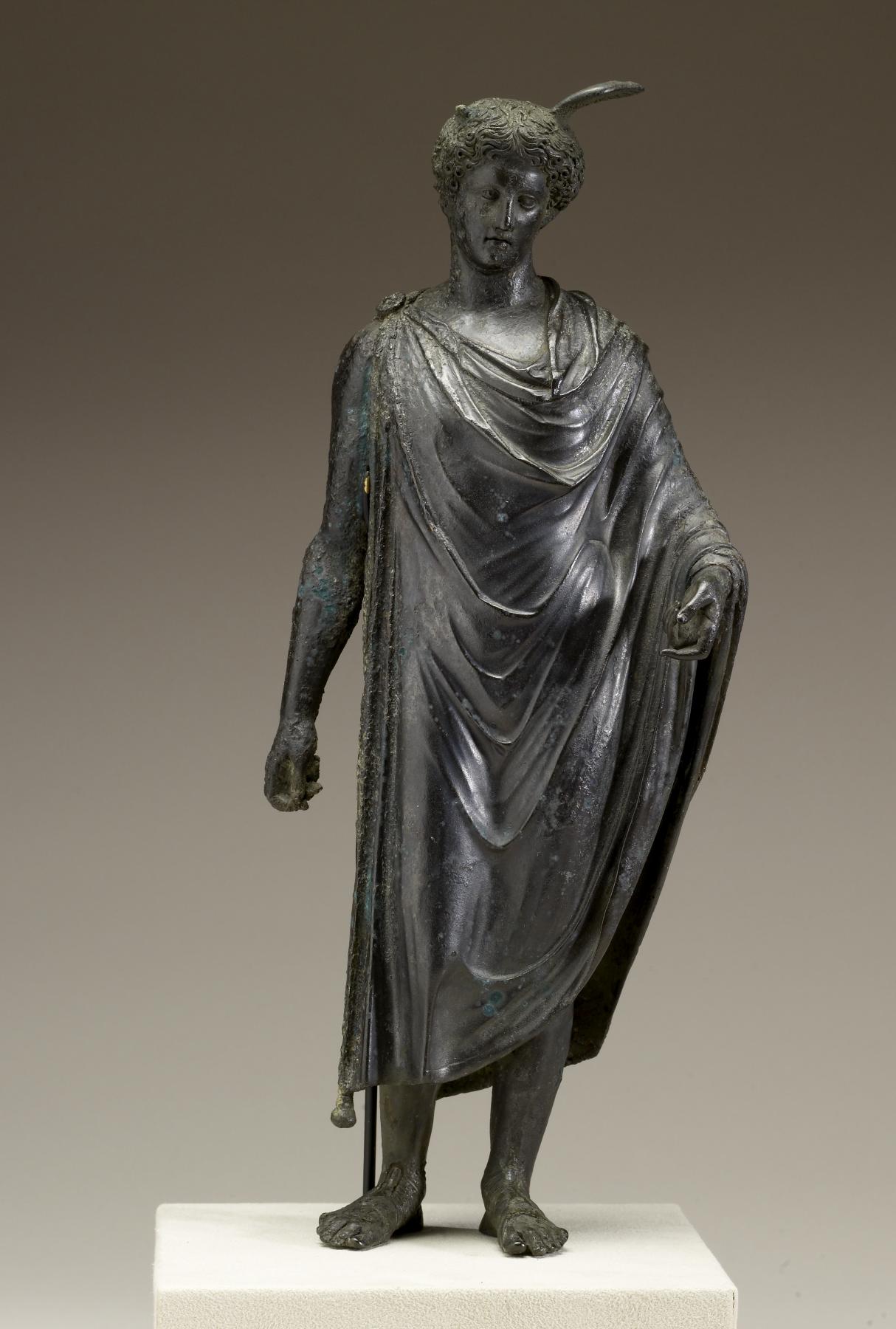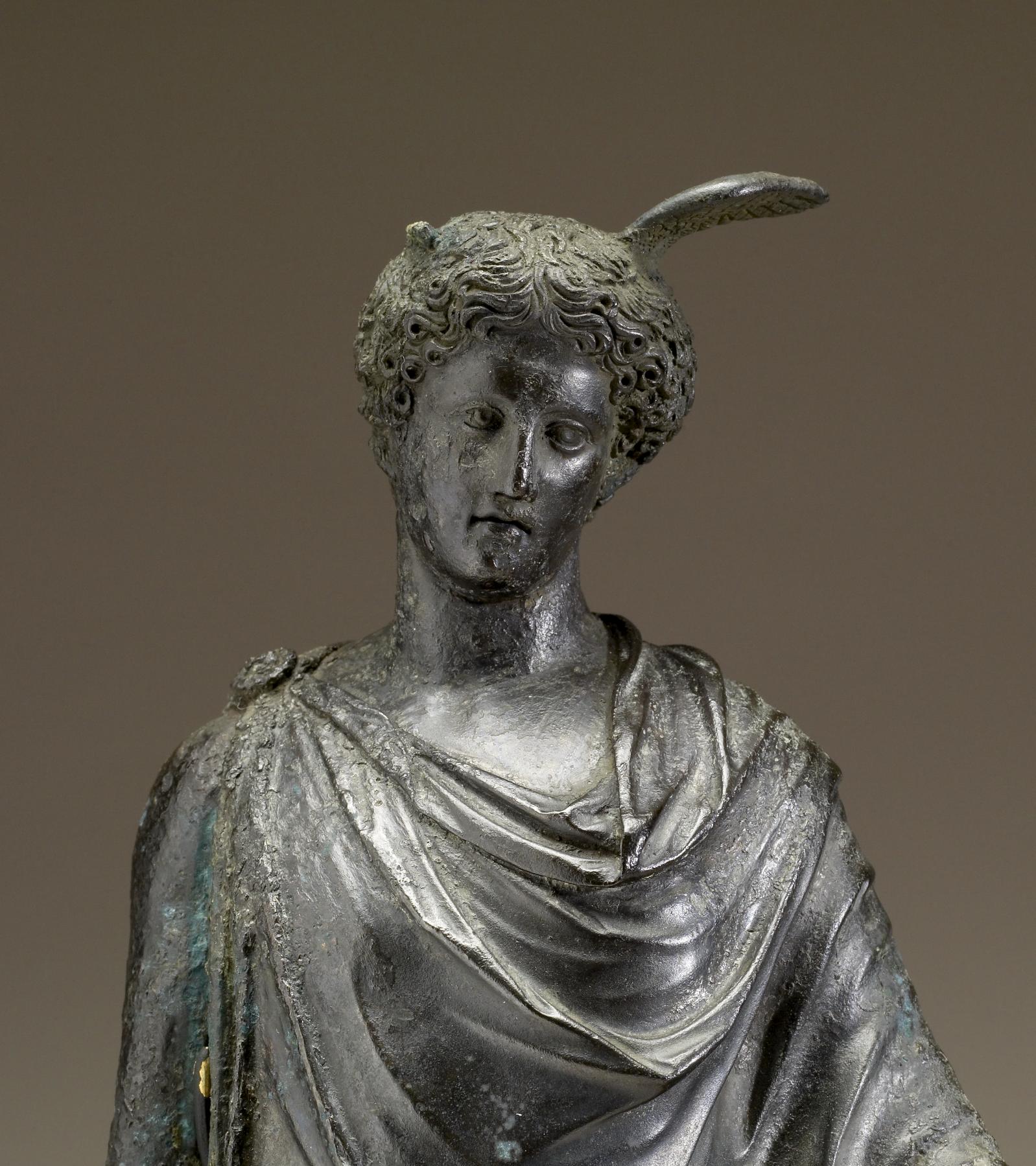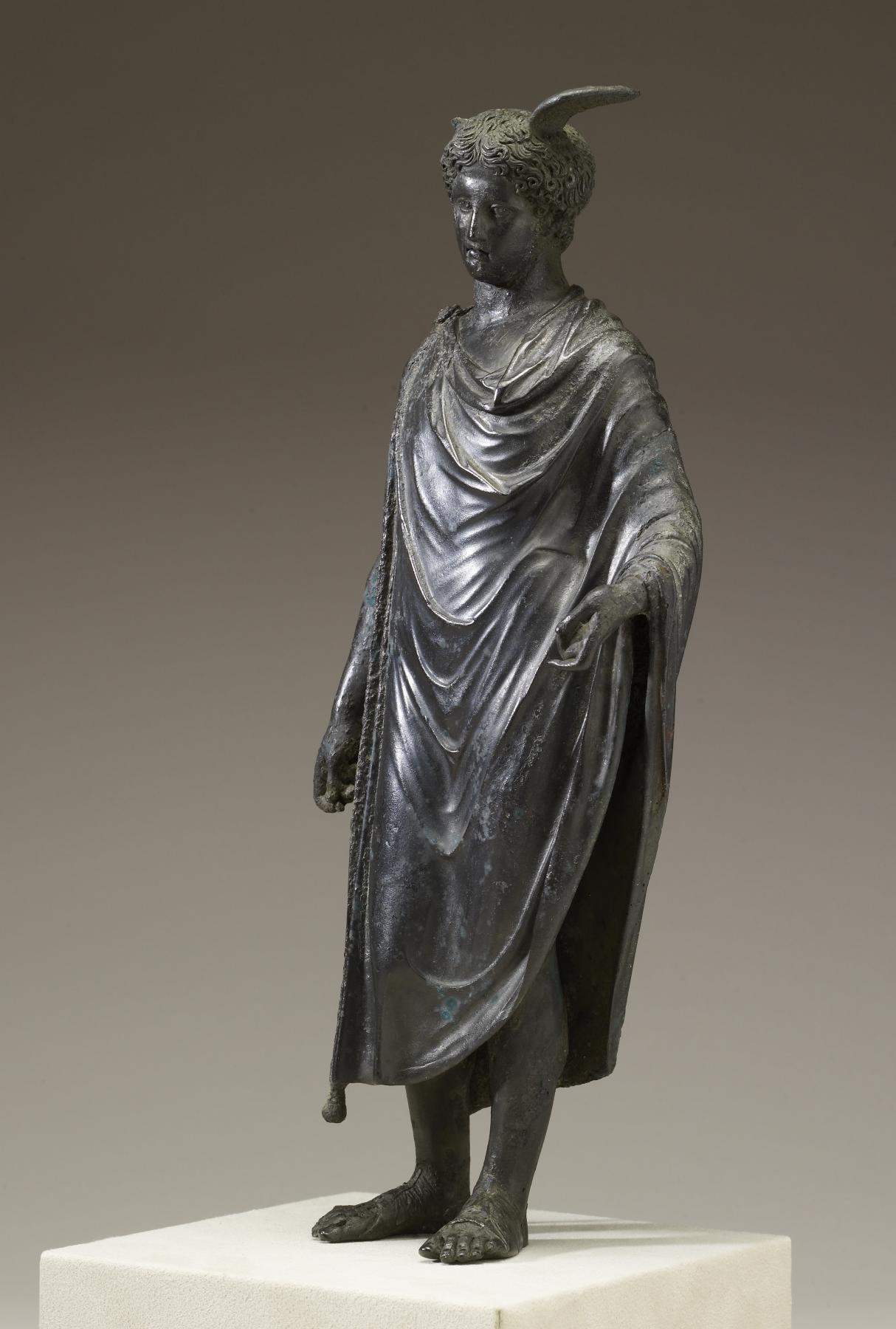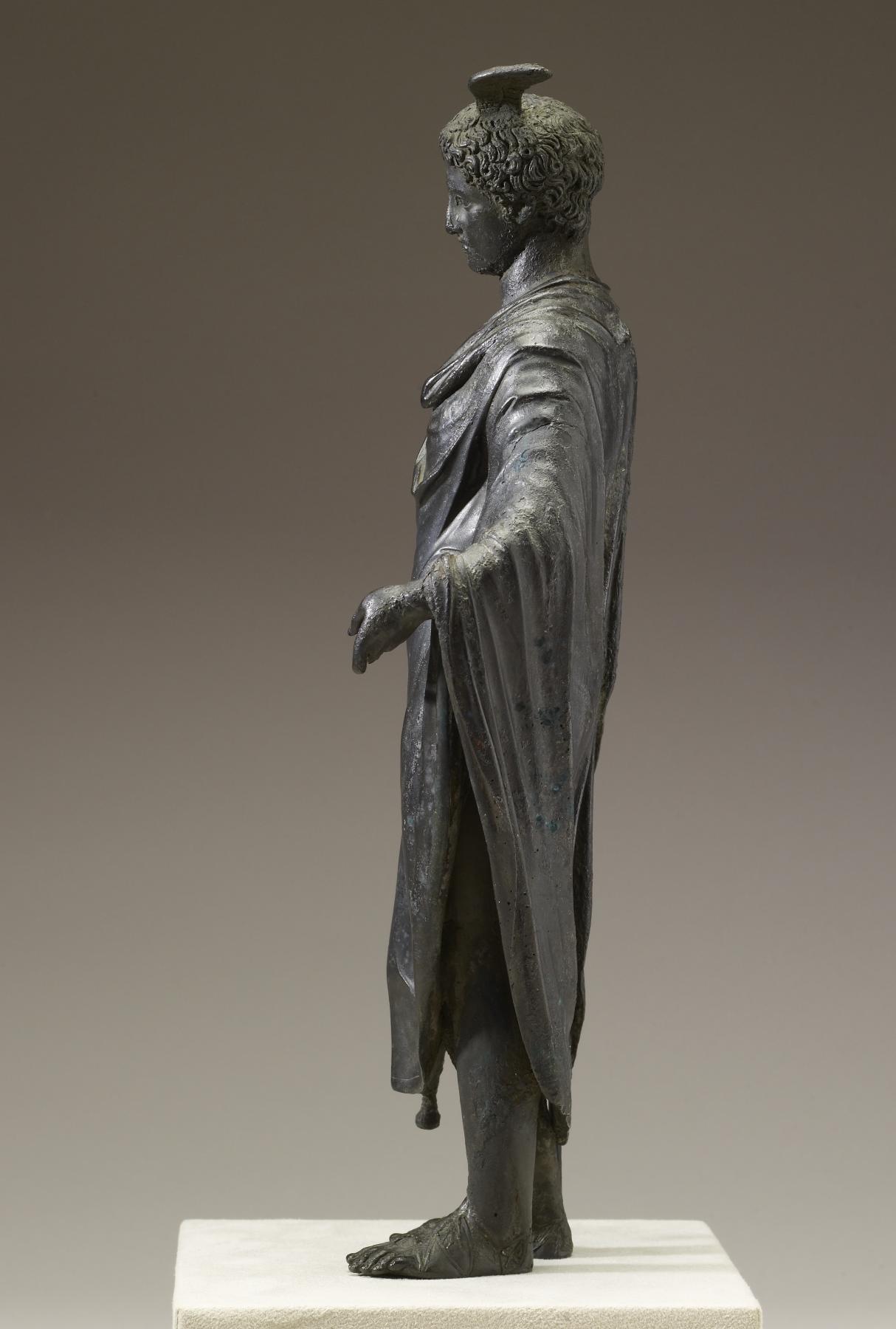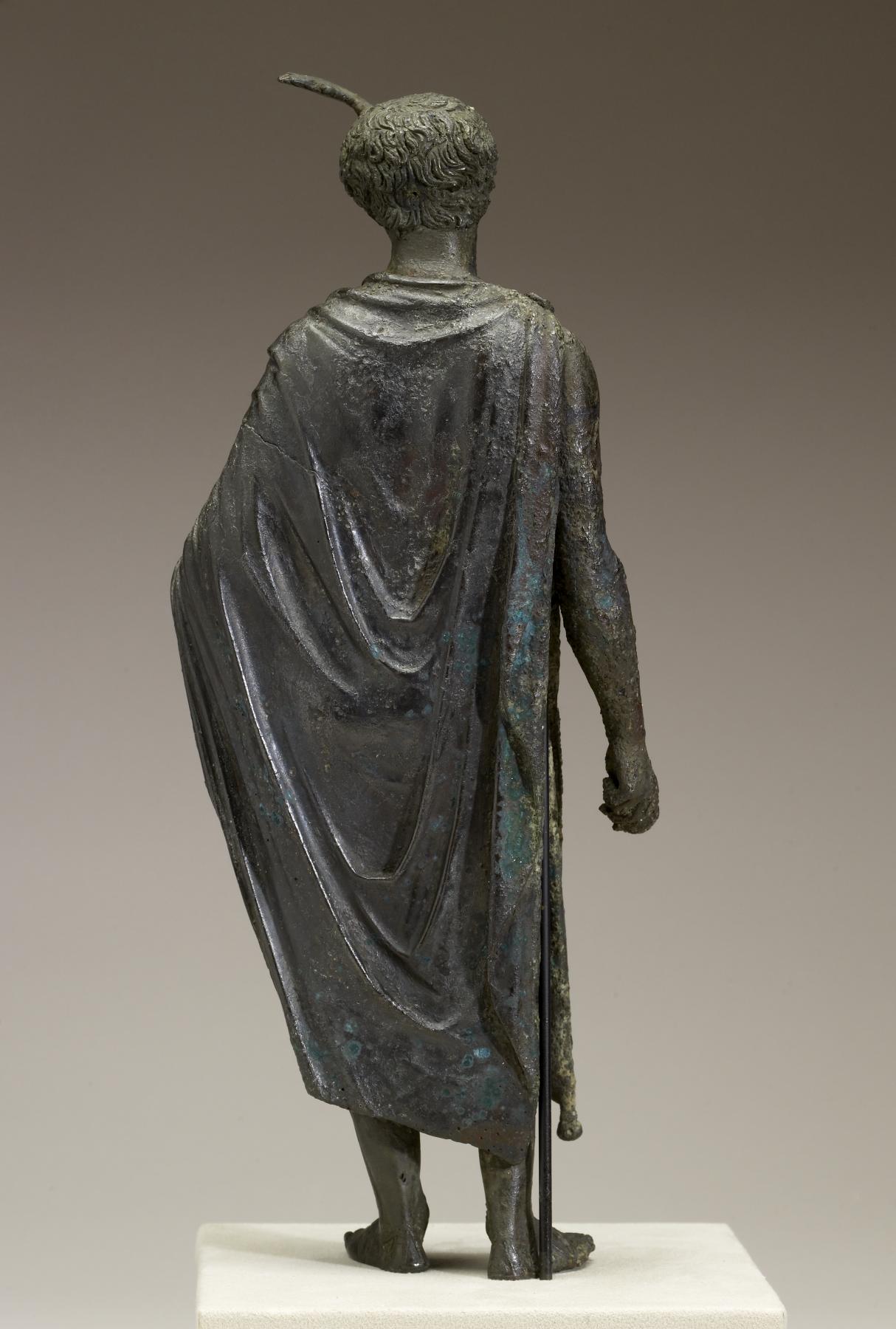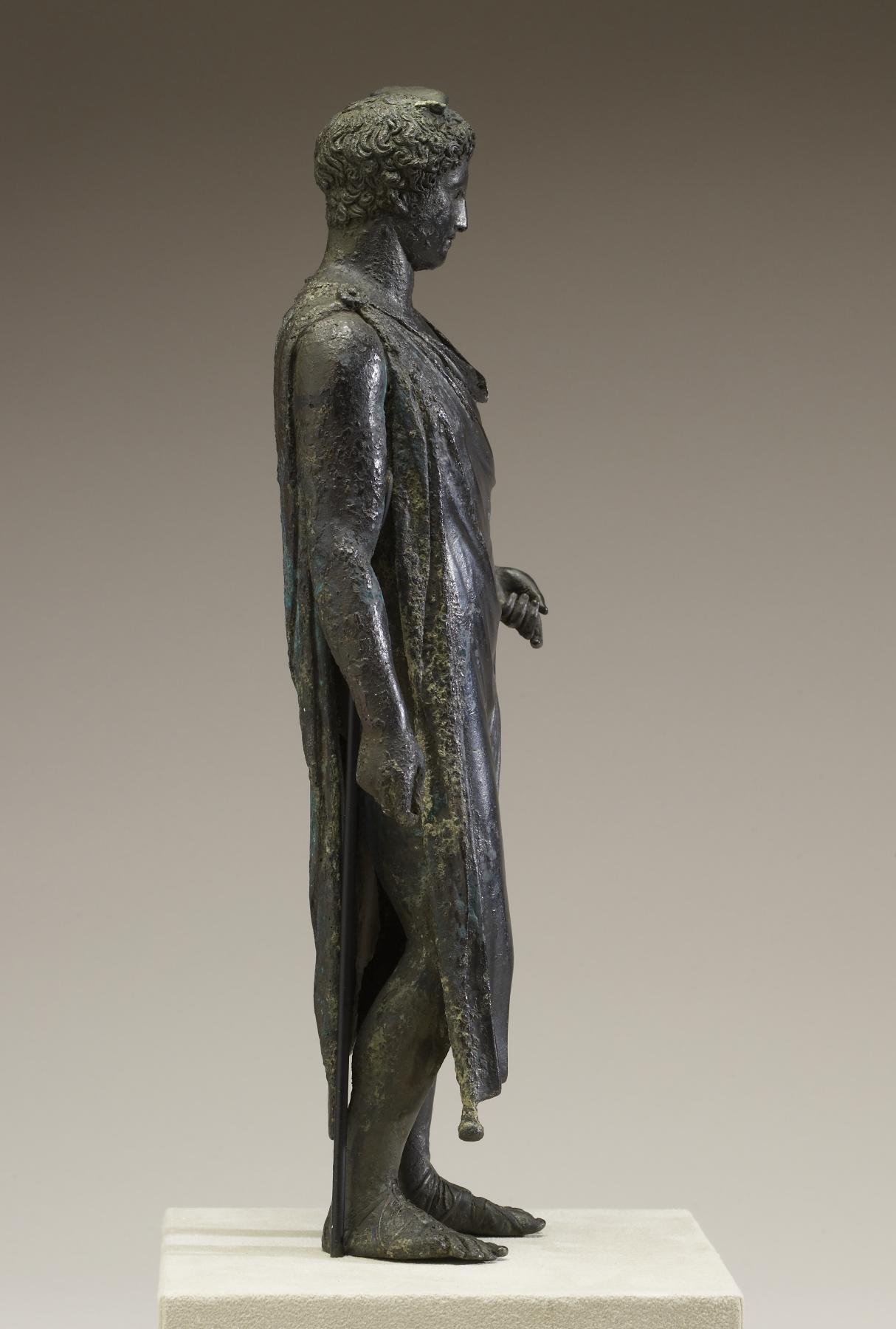Mercury
(Roman Empire )
The wings (one missing) on the head of this figure identify it as representing Mercury, the messenger of the gods. It is exquisitely detailed and larger than most statuettes made for household worship, suggesting that it was prominently displayed within the villa of a wealthy Roman family. The hairstyle dates the piece to the mid 1st century, when artists were still very much influenced by the Classical style of Greek art. His left hand would have held the "caduceus," or herald's staff, that is his attribute (familiar today as a medical symbol).
Provenance
Provenance (from the French provenir, 'to come from/forth') is the chronology of the ownership, custody, or location of a historical object. Learn more about provenance at the Walters.
Henry Walters, Baltimore [date and mode of acquisition unknown]; Walters Art Museum, 1931, by bequest.
Exhibitions
| 1988-1989 | The Gods Delight: The Human Figure in Classical Bronze. The Cleveland Museum of Art, Cleveland. |
Conservation
| Date | Description | Narrative |
|---|---|---|
| 3/1/1936 | Treatment | coated; other |
| 6/7/1957 | Treatment | cleaned |
| 9/17/1959 | Treatment | cleaned |
| 11/15/1959 | Examination | survey |
| 6/2/1986 | Loan Consideration | examined for loan |
| 10/30/1986 | Treatment | cleaned; loss compensation; other |
| 3/12/1987 | Technical Report | other |
| 4/26/2011 | Treatment | cleaned |
Geographies
Roman Empire (Place of Origin)
Measurements
H: 11 13/16 × W: 4 3/4 × D: 2 3/8 in. (30 × 12 × 6 cm)
Credit Line
Acquired by Henry Walters
Location in Museum
Accession Number
In libraries, galleries, museums, and archives, an accession number is a unique identifier assigned to each object in the collection.
In libraries, galleries, museums, and archives, an accession number is a unique identifier assigned to each object in the collection.
54.605

